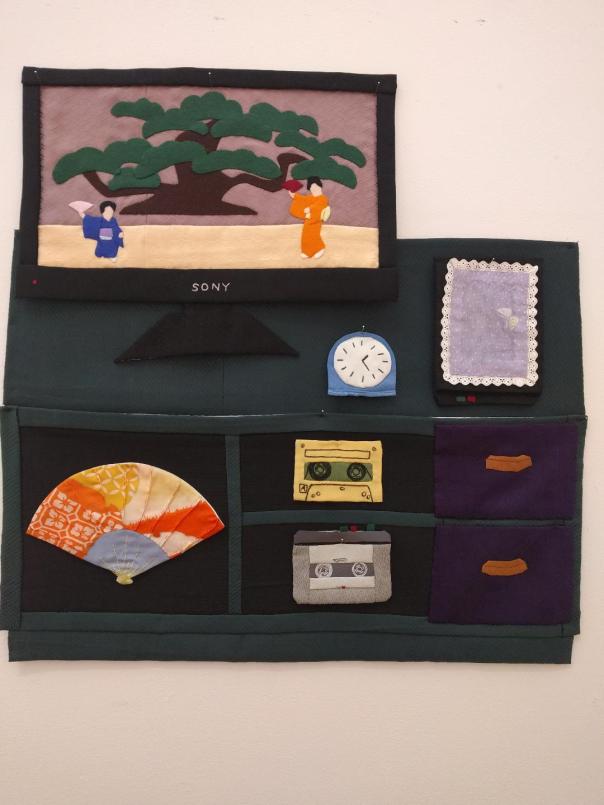On Saturday, November 11th, I went to the International Studio and Curatorial Program’s (ISCP) Open Studios which is held twice a year. I met Fuyuka Shindo in her second floor studio which now resembled a small gallery since all hints of the artist’s daily labors had been nicely tidied up to display her art. On the walls, were several of her finished ethnographic pieces as well as the beginning forms of a new work that she had started planning. A table contained some additional elements of the work on the wall as well as exhibition and installation photographs.
Shindo’s artistic practice focuses on a historical relationship with the island of Hokkaido, Japan. She is interested in mining the ethnographic history of Hokkaido and its indigenous people the Ainu and Emishi. In conversation with the artist, she mentioned that she researches historical archives and in her recent works wants to represent the period of contact between the peoples of Hokkaido island and Westerners which took place during the Meiji Restoration at the end of the nineteenth century. Japan went from being an isolated feudal society to a more modern, western looking one during this roughly fifty-year period. Shindo learnt to sew from her grandmother in Hokkaido and the works displayed on the wall are meticulously crafted and sewn. Two pieces hanging on the wall resembled coats – a raincoat and a thick parka – seemed to be made out of materials such as plastic, cloth and felt. Shindo herself said that she also uses materials such as old kimonos. She is able to create very fine details using fabric. Another piece (pictured below), is a representation in fabric of a media table with a flat-screen TV. Alongside the TV are also older technologies such as a cassette tape and player and a fan.

Looking at the artist’s installation photographs, and especially the black and white one of Shindo and a collaborator wearing her hand-sewn attire resembling those worn by indigenous people in cold climates, made me think of the photographic work of Indian artist PushpmalaN. In one series, Pushpmala also researched and staged photographs taken by the British of their colonial subjects in traditional garb. This series to me, From the Ethnographic Series: Native Women of South India Manners and Customs, 2000-2004, represented the collision of exoticism and the tendency to create a divide between the Western viewer and Eastern subject with the desire to capture a living culture for ethnographic purposes. Like Pushpamala, Shindo also inserts herself into the frame therefore blurring the line between past and present. I enjoyed the transformative qualities of Shindo’s art even though it is hard to pinpoint what is exactly ethnographic versus artistic creation in her work. Perhaps, it was the feeling of being transported to another time and place – one in which the details were a bit fuzzy and ambiguous – which made it particularly compelling for me.